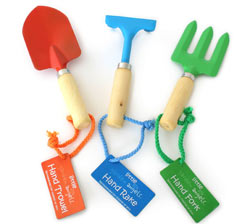
Bring Your Sense of Humor
Face it: Gardening with children has its own unique challenges. These situations can be handled by an impatient, grumpy adult who just wants to get the job done, (which isn't fun for anybody), or by someone who patiently sees beyond the mess to the humor of telling the tale in their old age.
Be Balanced
Children are children. They are not miniature adults. They will be distracted by a butterfly and follow it across the garden, stomping on seedlings along the way. Gently remind them about the seedlings, but allow yourself to enjoy the enchantment in your child's face. Think about this: In the end, unless your family is on the verge of starvation, a few dead plants here and there aren't going to make that much of a difference. Allow for that when you plant your garden and you'll be more prepared for the eventual mishap.
Another challenge to consider is attention span. Depending on the child, you may have to introduce them to gardening in 15 minute increments. As they mature, you can increase the time they spend in the garden.
Give Them Their Own Tools

Give Each Child His or Her Own Space
If possible, give each child a space to call their own and let them plant whatever they want. Good plants for children include greens such as lettuce, spinach, and kale. Radishes sprout quickly, and children delight in finding the hidden food in the ground. Peas are a great crop for children, since they sprout quickly, can be harvested by early summer, and can be eaten directly from the garden. Sugar snap peas are one of my own son's favorite.
Remember the Goal
When including children in gardening tasks, remember that the main goal isn't necessarily getting the job done as efficiently as possible, but rather to give the child an experience that they can draw on in their future. If you keep these points in mind, gardening with children can be a success.
The memories you create by working outside in a lovely garden will be worth far more than any produce you get from it. Encouraging a child's sense of wonder in being part of the circle of life is a life lesson far more important than getting a few home-grown carrots or potatoes by the end of summer.